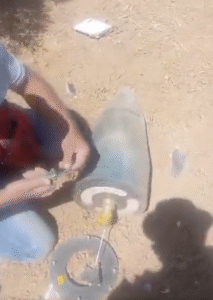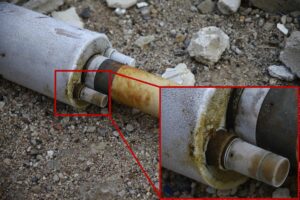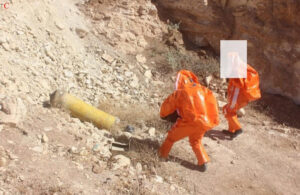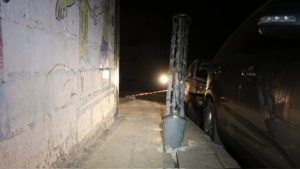Analyst Note:
This image shows a Mk 104 Dual Thrust Rocket Motor (DTRM), the second-stage rocket motor for the SM-2, SM-3 Blk I, and SM-6 missiles. Based on the strakes or fins attached to this Mk 104, it can be determined that it was part of an SM-3 Blk I series missile. (ARES)

 A large country in the Middle East experiencing civil war since 2011
A large country in the Middle East experiencing civil war since 2011 
































































































